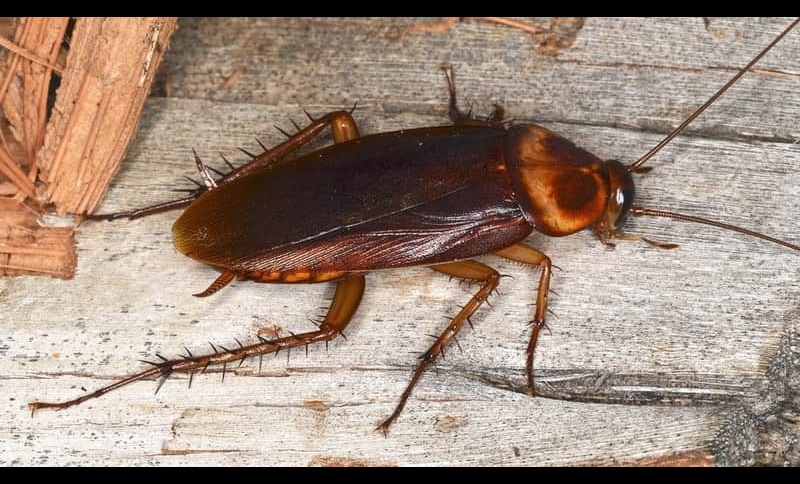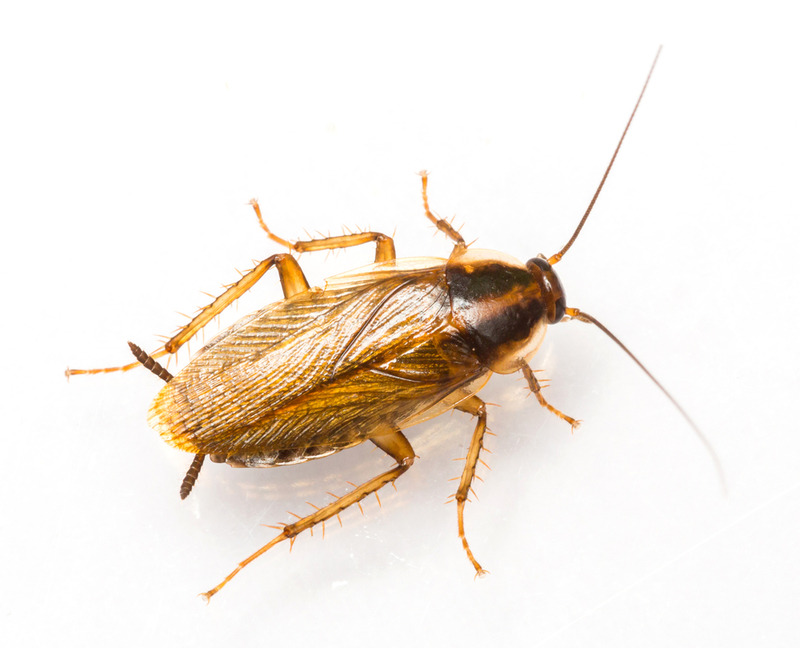Fall weather brings pumpkin-flavored coffees and treats. But does it also bring cockroaches?

When the weather starts to cool down, many animals either hibernate or migrate to warmer climates. But not cockroaches. After all, when your lifespan is anywhere from six months to a year and a half, you don’t have much time for restorative sleeps or road trips.
So what happens to cockroaches when the temperatures drop? Can cold weather kill cockroaches? Read on to learn how seasonal temperature variations can affect the behaviors of two of the most commonly found cockroaches in the United States.
American Cockroach
The American cockroach can be found across the U.S., and can be one of the largest cockroaches you’ll find in your home. These roaches prefer to live outdoors in woodpiles, dead logs and trees; places like that are ideal cockroach habitats for this insect.

American cockroaches can tolerate cold weather. In fact, some can withstand below-freezing temperatures for a period of time. But they’d rather stay warm in the fall and winter months, meaning they’re happy to invite themselves into your home. They really enjoy indoor environments that are kept at about 70 degrees, which is likely very close to the temperature you set your thermostat to during the fall and winter.
Having cockroaches in your house is bad enough, but knowing that females can produce egg sacks holding up to 16 eggs every six days might make you cringe. Not to mention the fact that American cockroaches have been known to settle with family, meaning you may have multiple generations of these bugs in your house at any given time.
Additionally, while not every cockroach contains pathogens, some do. That means everything pathogen-carrying roaches come into contact with is subject to being tainted with bacteria. And they’ll make their ways around many different areas, from sink drains to kitchen counters.
German Cockroach
German cockroaches aren’t really from Germany. In fact, some researchers think they may be from Asia. Regardless of where they originated, you don’t want these cockroaches in your house. However, this is exactly where they’d prefer to be when the temperature drops.

Ideal German cockroach habitats maintain a temperature of about 90 degrees Fahrenheit. Even on the iciest day of winter, it’s unlikely that the inside of your home is heated to those high temps. But that doesn’t matter to the German cockroach, as it prefers to live inside regardless of outdoor temperatures. In fact, it’s possible to find these cockroaches in your house any time of year.
As with their American counterparts, German cockroaches are prolific breeders with egg sacks that hold up to 40 eggs. Additionally, younger roaches can reach adulthood in as few as 42 days. That means in just over a month, all the surviving cockroaches from a brood are capable of reproducing and creating new broods. And that scenario is based on the assumption that there was only one of these cockroaches in your house to begin with. Due to the German cockroach’s preference for cracks and crannies, it’s highly likely that there are more German cockroaches in your house than you realize.
How to Kill Cockroaches
One reason you may find cockroaches in your house in fall or winter is because of the temperature. But there’s another reason why they might choose to weather cooler climates in your home. They like having easy access to food and water sources.
When you start thinking about how to kill cockroaches, the first thing you want to do is figure out ways in which you can make your home less appealing to these insects. Here are several steps you can take to keep cockroaches from moving into your house:
- Clean up any cockroach food sources by wiping up spills and crumbs, and never leave food or beverages out and uncovered in your home.
- Sweep or vacuum regularly, as some roaches feed on their own excrement. (Gross, right?)
- Empty vacuum bags away from the house in case they contain cockroach egg sacks.
- Eliminate possible water sources by wiping down tubs, shower walls and sinks and by repairing leaky fixtures. You may also want to invest in toothbrush covers.
- Seal cracks and other possible cockroach entry points.
- Keep your yard as clean as possible and store leaf and wood piles far from the house.
These steps will help in terms of prevention, but they only go so far. This is especially true of German cockroaches, which are also resistant to certain types of insecticides. If you already have cockroaches in your house, it’s probably best to let a professional pest control service deal with them. Our trained technicians can work with you to customize a pest control plan that fits your needs.
Sources:
https://extension.umn.edu/insects-infest-homes/cockroaches


